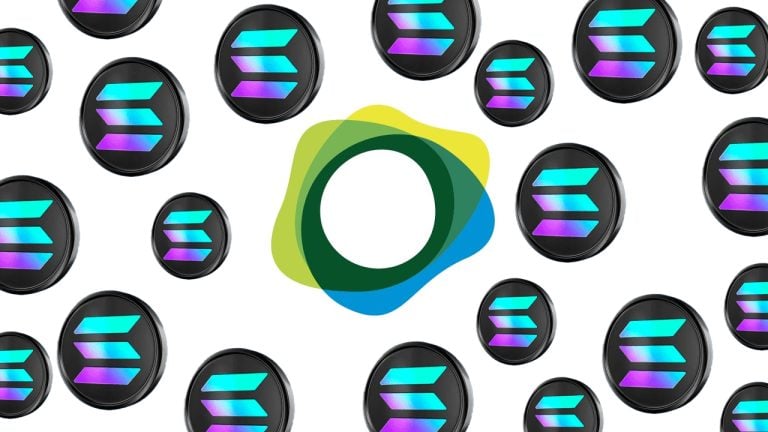
Introduction
Paxos, the tokenization and stablecoin platform, has announced its plans to broaden the issuance of its stablecoin, Pax Dollar (USDP), to the Solana blockchain. This move comes after receiving approval from the New York Department of Financial Services (NYDFS). The company expects that USDP on Solana will be available to the public from January 17, 2024.
Paxos Ventures into Solana, Expanding the Reach of USDP in the Crypto Market
Paxos recently revealed that the expansion to Solana marks its first venture into a new blockchain, as USDP was initially launched on Ethereum. The NYDFS endorsement of Paxos' initiative allows for public access to USDP via Solana by mid-January 2024.
"The expansion of our stablecoin platform to support Solana marks an important step towards making stablecoins ubiquitous for everyday consumers," said Walter Hessert, Head of Strategy at Paxos.
Other Initiatives by Paxos
In addition to USDP, Paxos has been overseeing the issuance of the stablecoin BUSD. However, the NYDFS directed the cessation of BUSD creation, leading to a significant redemption of circulating BUSD over the past year. Paxos also collaborates with Paypal to oversee the issuance of PYUSD, a stablecoin recently introduced by Paypal.
Market Position of USDP
Currently, USDP is the ninth largest stablecoin in terms of market capitalization, with a circulating supply of 369,946,003 tokens. It has received an A- grade from Bluechip's stablecoin rankings, recognizing its compliance with regulations and focus on customer protection. However, the rankings also highlight the limited adoption of USDP in the wider crypto markets.
In the last 24 hours, USDP has witnessed a global trade volume of $3,937,693. Though modest compared to major stablecoins like tether (USDT) at $48.80 billion and usd coin (USDC) at $14.68 billion, USDP's most active exchange is Binance, with the most traded pairing being USDP/USDT.
The Solana Connection
Paxos has disclosed the specific Solana smart contract address for USDP in its announcement. Currently, there are only 69 Solana-based USDP tokens in existence, with five recorded transactions. These token test transfers took place eight days ago, according to Solscan.io, the Solana explorer.
"Paxos's decision to bring stablecoin issuance to the Solana blockchain will demonstrate how Solana's high-performance network and low transaction fees can support regulated financial products and provide leaders like Paxos with new avenues for scaling and innovation," commented Raj Gokal, co-founder of Solana.
Conclusion
Paxos' expansion to the Solana blockchain represents a significant step toward increasing the accessibility and adoption of stablecoins for everyday consumers. With the NYDFS approval and the support of Solana's network, Paxos aims to further innovate and scale its stablecoin offerings. Share your thoughts on Paxos' expansion to Solana in the comments section below.
Frequently Asked Questions
Are silver and gold IRAs a good idea for you?
This could be a great way to simultaneously invest in gold and silver. But there are other options. Contact us anytime if you have questions about these types investment options. We're always glad to help!
What are the pros and cons of a gold IRA?
The gold IRA is a great way to diversify your portfolio, but you don't have access the traditional banking services. It allows you to invest in precious metals such as gold, silver, and platinum without paying taxes on any gains until they're withdrawn from the account.
The downside is that early withdrawals will result in ordinary income taxes on earnings. But because these funds are held outside of the country, there is little chance of them being seized by creditors when you default on your loan.
A gold IRA is a great option if you want to own gold but not worry about taxes.
What precious metals are allowed in IRA?
The most common precious metallic used in IRA accounts, is gold. Also available as investments are bars and bullion gold coins.
Precious metals, which don't lose any value over time, are considered safe investments. They're also considered a great way to diversify an investment portfolio.
Precious metallics include platinum, silver and palladium. These metals share similar properties. Each metal has its own unique uses.
For example, platinum is used in making jewelry. You can create catalysts with palladium. To produce coins, silver can be used.
Think about how much you can afford to purchase your gold, before you make a decision on the precious metal. You may be better buying gold that is less expensive per ounce.
You should also think about whether you want to keep your investment private. If you have the desire to keep your investment private, palladium might be the best choice.
Palladium can be more valuable than gold. It is also more rare. It's likely that you will have to pay more.
Their storage fees are another important factor to consider when choosing between sterling and gold. You store gold by weight. You will pay more if you store larger amounts.
Silver is stored by volume. You'll be charged less for smaller amounts.
Follow all IRS rules regarding silver and gold if you are storing precious metals within an IRA. This includes keeping track, and reporting to the IRS, all transactions.
Which type of IRA is the best?
When choosing an IRA, it is important to choose one that suits your lifestyle and goals. Consider whether you are looking to maximize tax-deferred growth, minimize taxes and pay penalties later, avoid taxes, or both.
The Roth option is a good choice if you have a lot of money saved for retirement, but not enough to invest. If you plan to continue working beyond age 59 1/2, and pay income taxes on any account withdrawals, the Roth option may be a good choice.
If you plan to retire early, the traditional IRA might make more sense because you'll likely owe taxes on the earnings of those funds. If you are going to be working beyond 65 years old, the traditional IRA may make more sense because you can withdraw all or part of your earnings without having to pay taxes.
Statistics
- The IRS also allows American Eagle coins, even though they do not meet gold's 99.5% purity standard. (forbes.com)
- The maximum yearly contribution to an individual's IRAs is currently $6,000 ($7,000 for those 50 years or older), or 100% of earned income, whichever is less. (monex.com)
- You can only purchase gold bars of at least 99.5% purity. (forbes.com)
- If you accidentally make an improper transaction, the IRS will disallow it and count it as a withdrawal so that you would owe income tax on the item's value and, if you are younger than 59 ½, an additional 10% early withdrawal penalty. (forbes.com)
External Links
wsj.com
forbes.com
- Gold IRA: Add Some Sparkle To Your Retirement Nest Egg
- Understanding China's Evergrande Crisis – Forbes Advisor
kitco.com
takemetothesite.com
How To
How to open a Precious Metal IRA
Precious Metals are one of today's most desired investment vehicles. Precious metals have a higher return than traditional investments like bonds or stocks, which is why they are so sought-after. But, it is important to do your research and plan carefully before investing in precious metals. Here's how to open a precious-metal IRA account.
There are two types of precious metal accounts. They are paper gold and silver certificates (GSCs) and physical precious metals accounts. Each type comes with its own set of advantages and disadvantages. GSCs, on the other hand, are more accessible and can be traded. Continue reading to learn more about each of these options.
Physical precious metals accounts consist of coins, bars, and bullion. This option is great for diversification, but it has its drawbacks. Precious metals can be expensive to store, buy and sell. It can also be difficult to transport their large sizes from one place to the next.
However, silver and gold certificates made of paper are quite affordable. These certificates can also be traded online, and they are easy to access. They're a great choice for people who don’t want precious metals. They aren’t as diversifiable as their physical counterparts. These assets are also supported by government agencies, such as the U.S. Mint. Inflation rates could cause their value to drop.
If you open a precious metal IRA, choose the right account for your financial situation. Before you make that decision, here are some things to consider:
- Your tolerance level
- Your preferred asset-allocation strategy
- How much time will you invest?
- Consider whether you will use the funds to trade short-term.
- What kind of tax treatment you'd prefer
- Which precious metals would you prefer to invest in
- How liquid can your portfolio have to be
- Your retirement date
- Where you'll store your precious metals
- Your income level
- Current savings rate
- Your future goals
- Your net worth
- Any special circumstances that may affect your decision
- Your overall financial situation
- Preference between paper and physical assets
- Your willingness to take on risks
- Your ability manage losses
- Your budget constraints
- Your desire to become financially independent
- Your investment experience
- Your familiarity with precious metals
- Your knowledge of precious metals
- Your confidence and faith in the economy
- Your personal preferences
After you have determined the type of precious metal IRA that best suits you, you can open an account with a reputable dealer. These companies are often found by word of mouth referrals or online research.
Once your precious metal IRA has been opened, you'll need decide how much money you wish to invest. Each precious metal IRA account requires a minimum initial deposit. Some accounts only require $100, while others may allow you up to $50,000.
You can invest as much or as little money in your precious metal IRA as you like. If you're looking to build wealth over a long period, you should probably opt for a larger initial deposit. A lower initial deposit may be better if you plan to invest smaller amounts of money each month.
You have many options when it comes to the type of investments you can make. These are the most commonly used:
- Bullion bars. Rounds, and gold coins.
- Silver – Rounds and coins
- Platinum – Coins
- Palladium – Round and bar forms
- Mercury – Round or bar forms
—————————————————————————————————————————————————————————————-
Based on [POSTTITLE]
by [POSTAUTHOR]

















